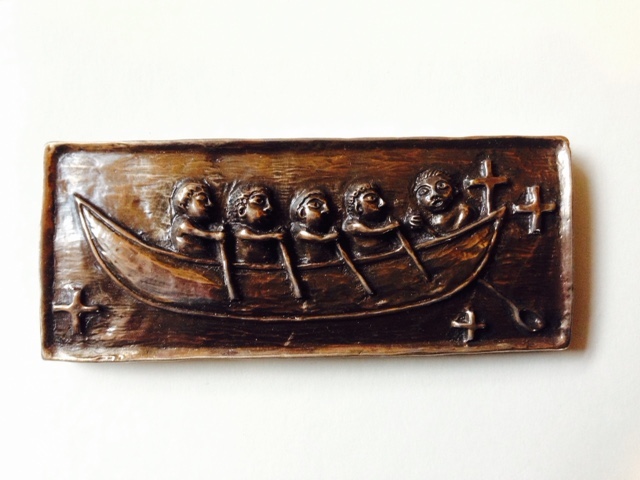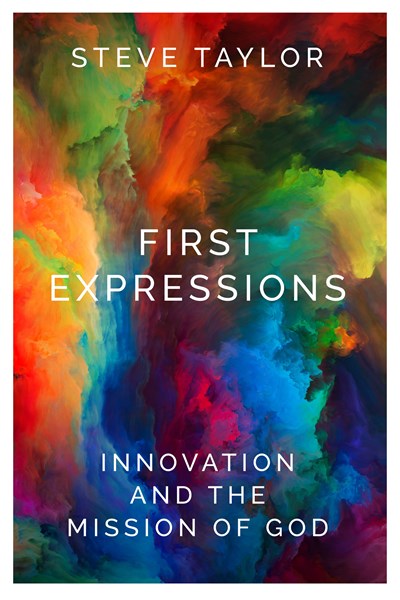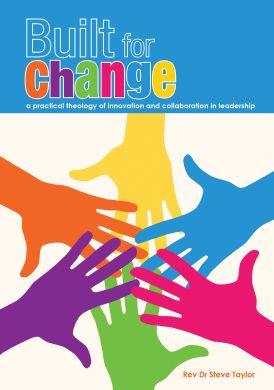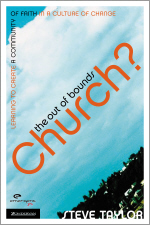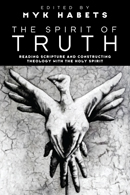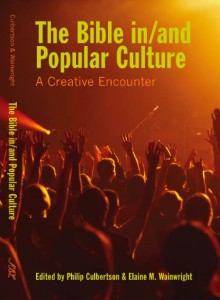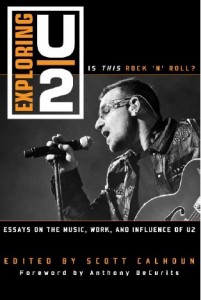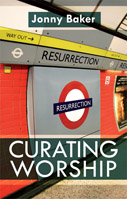Thursday, June 14, 2018
burning bushes in cultures and contexts
It’s been a real privilege to spend a week with the Church of Scotland, speaking at various events on innovation and mission. My thanks to Doug Gay, Trinity College and the Panel for Review and Reform, who generously made the time possible and did the hard work of promoting, organising and hosting. Over four days, I did 5 different events, the shortest 90 minutes, the longest three hours, all with a different focus.
Some events were open to the public and provided a chance in general to work with questions of innovation and mission. Some were focused on senior leadership of national and Presbytery bodies, or those working in theological formation. These gave a chance to compare stories and in the richness of different contexts, gain insight.
 As a way of helping locate myself, and as a way to emphasis how cultures and context create space for innovation, I began each session both with a greeting (mihi) in Maori and showed some images of the burning bush in Aoteoroa New Zealand – and the role of Maori culture, Pacific migration and alternative worship. In the burning vine that is Te Aka Puaho, in the frangipani flowers added to the stained glass window of St Johns Papapatoetoe, in the pumice rocks soaked with methylated spirits that then then burn blue, there are important mission insights, about how diverse cultures hear faith differently.
As a way of helping locate myself, and as a way to emphasis how cultures and context create space for innovation, I began each session both with a greeting (mihi) in Maori and showed some images of the burning bush in Aoteoroa New Zealand – and the role of Maori culture, Pacific migration and alternative worship. In the burning vine that is Te Aka Puaho, in the frangipani flowers added to the stained glass window of St Johns Papapatoetoe, in the pumice rocks soaked with methylated spirits that then then burn blue, there are important mission insights, about how diverse cultures hear faith differently.
Monday, April 30, 2018
Lest we forget: Anzac beginnings through the words of Kingmaker Wiremu Tamihana
I preached at the Knox Chapel Anzac service this weekend. The Bible readings were Ephesians 2 and Psalm 23. I looked at Anzac beginnings through Australian eyes and the words of Maori chief, Wiremu Tamihana (whom I researched through much of last year). This opened up a reflection on Ephesians 2 and New Zealand mission history. I finished with the tekoteko of Te Maungarongo, Jesus the ancestor.
“The most remarkable Anzac sermon I’ve ever heard” commented an Emeritus Professor of Law. “Outstanding” commented a University Chancellor. So here it is … (more…)
Thursday, March 22, 2018
preaching to a burgled church
Last weekend I was preaching at a local church. I arrived in the morning to the news that the church auditorium had been burgled overnight. The sound system and data projector were gone. With the Police on the way to dust for fingerprints, there was no way the auditorium could be used.
 (not an actual picture of the actual burglary)
(not an actual picture of the actual burglary)
The church had a hall and with 15 minutes to go, I suddenly not only had a whole group of strangers to meet and greet for the first time. I also had a church service to re-jig. My preparation had included a number of creative moments that relied on the now absent sound system and data projector:
- the use of three art images to illuminate the Lectionary text, to be shown via the data projector
- a digital file of a song for during the offering
- a digital file of a song for the end of the service
- a responsive contemporary Immigrants Creed
In addition, there was a hall to set up, along with the range of emotions that would be present. Which meant some rapid mental reshuffling and some interesting learnings.
First, at the beginning, the value of humour and a settling prayer. As we began, I introduced myself, noted the burglary and that as a result, this would be a service I would never forget. So could we pause and in this new and unsettling space, take a moment to gather ourselves. I then named some of the emotions running through me and invited God to be present. Doing this provided some instant connection and a sense of solidarity.
Second, at the end, as a key leader in the church stood to thank me for the worship and sermon, the comment was made “It is good to be reminded we don’t need a building in order to worship.” In other words, the enforced shift provided an experience in which the shared realisation could emerge – that worship does not rely on bricks and mortar.
Third, thank goodness for hymn books. Yes, all the words for sung worship had been carefully loaded ready for data projection and these could no longer be used. But a stack of hymn books meant that we soon had something to sing. More importantly, everyone had something to hold, something familiar. This gave a sense of comfort. It also meant that the absence of the digital songs I had planned for the offering and the end of the service could be quietly dropped.
Fourth, the enforced shift made it easy to implement immediate change. I was suddenly no longer the visiting speaker but the leader in an unfamiliar space. “How do you want the chairs?” was the first question. “Ah, circle please” I said, not sure if this was allowed. But in a new space, with no tradition, the churches were quickly arranged in a lovely relational, intimate arc. They say you need to build relationship in order to implement change. Well not in a burglary. So never waste a good crisis. Use it to enact different patterns of connecting.
Fifth, the value of being up close. When it came time for the worship by considering three art images that illuminated the lectionary text, I announced that because of plan B – B for burglary, I would show three art images by walking around with my laptop. I asked that a hymn be played quietly, and invited people waiting for the images to enjoy the music. As I walked among the chairs, I noticed people leaning forward to look at my laptop. There was body movement, in a different way than if the images had been on a big screen. There was also often spontaneous comments, like “that’s the best one” or “is that a baby?” When I mentioned the art images later in my sermon, I included these spontaneous comments, pointing to people and saying “you were right, it was a baby.” Being up close invited a different type of bodily engagement in the act of seeing and contemplating, along with a set of interactions between myself and those present. All of this enhanced the sense of connection.
There was certainly truth in my observation that this would be a service I would never forget. It was a great morning. The burglary enabled a very different sort of worship experience, one which might in fact be remarkably useful for a church needing to continue to change.
Thursday, February 22, 2018
Re-weaving creation and redemption in light of Oceanic epistemologies
This project will examine the relationship between creation and redemption as they relate to the missio Dei. This has particular relevance in Oceania, given the unique water-based geographies that shape history and epistemology. It also has global relevance, given that the Pacific Ocean is the planet’s beating heart and the Cartesian dualisms inherent in the European authors’ who in the twentieth century articulated the missio Dei.
The project will involve a bi-cultural partnership between two authors, one Maori, the other Pakeha New Zealand. Together they will read the Waitangi Tribunal 1999, Whanganui River Report (1999) to articulate how water is understood and consider the implications for Christian understandings of creation and redemption. This will foreground indigenous epistemological realities, in particular threads of ancestors and gift exchange.
The initial working proposal is that creation and redemption are woven together in multiple ways. Water is neither accident nor afterthought. It is the place where one is fully human, connected to ancestors and blessed through Divine gift exchange. This allows the missio Dei to be located amid Oceanic realities, as a challenge to anthropocentric and individualised notions of missio Dei.
For a baptismal liturgy, that began this project see here.
Wednesday, February 07, 2018
the beatitudes of waitangi day
Walking up the hill to our house yesterday evening, I composed a Waitangi Day grace:
Blessed are those who first said haere mai (welcome),
for with them was the grace of GodBlessed are the truth tellers of Te Tiriti,
for through them is the beginnings of changeBlessed are the meal makers,
for by them is the hospitality of God,Blessed are strangers,
for in each is a waiting friend, Amen
I wrote this grace for a social event I was part of hosting on Waitangi Day, February 6, 2018. The evening involved entertaining around 30 KCML interns, staff and families. Many of those coming were arriving as strangers to each other – different year groups, overseas scholars and their families – and I wanted to name that reality, yet frame it as opportunity (Blessed are strangers, for in each is a waiting friend). The food was a Team Taylor effort and I wanted to express my gratitude to my family (Blessed are the meal makers, for by them is the hospitality of God). The meal was held on Waitangi Day and I wanted to connect our hospitality with what I have learnt from manaakitanga (hospitality) from Maori culture.
The couplet framing – Blessed … for – has a nod to the beatitudes of Matthew 5. It seemed fitting for a grace, connecting our gathering with the values and commitments of Jesus.
The couplet framing was also shaped by U2 and Kendrick Lamar and the spoken word cameo that ends U2’s recent release “Get Out Of Your Own Way.” I like the way it updates the beatitudes of Matthew 5, bringing in contemporary categories. “Blessed are the bullies/ For one day they will have to stand up to themselves…/ Blessed are the liars/ For the truth can be awkward.” LA Times call it a “short sermon“.
Glad of the song, enjoying the Songs Of Experience U2 album, I began to think about the contemporary categories if I was doing a Kendrick Lamar, but “blessing” not America, but New Zealand and the Waitangi celebrations. Hence the couplets about Maori as those who “first said haere mai” or welcome; and “the truth tellers of Te Tiriti” – those who speak for truth about the history of the Treaty signing.
Of course, U2 were contemporising the beatitudes of Matthew 5 before Kendrick Lamar was born (in 1987). Bono wrote “Wave Of Sorrow (Birdland)” when he travelled to Ethiopia after Live Aid (around 1986). The song was reworked and released in 2007 as part of the 20th anniversary edition of The Joshua Tree. The two lines of a couplet are evident “Blessed … for.” They are also contemporised, into those “meek who scratch in the dirt,” “the voice that speaks truth to power.” and “tin can cardboard slums.”
Wave Of Sorrow (Birdland) is a song I love – brooding, justice-focused – with a clever set of lyrics that reframe Ethiopia with the dignity of “ancient holy scrolls.” Again, an echo of my beatitudes of Waitangi Day, which sought to honour Maori as sovereign actors, extending to a visiting Captain Cook and so many subsequent migrants a welcome that for me speaks of the grace of God.
Tuesday, December 12, 2017
No ordinary Sheila: a theological film review
Monthly I write a film review for Touchstone (the New Zealand Methodist magazine). Stretching back to 2005, some 120 plus films later, here is the review for December 2017.
No ordinary Sheila
A film review by Rev Dr Steve Taylor
In September this year, Stewart Island nurtured me. I had booked a retreat on New Zealand’s third largest island months prior. Then in late August my sister-in-law was diagnosed with a malignant brain tumour. Within days she lapsed in a coma, from which she never recovered. I arrived on Stewart Island broken by her sudden death.
In shock, expecting little, the island enfolded me in a healing balm. It soothed me as kiwi and kaka walked with me through the main town of Oban. It tended me as the sea lapped at every turn I took. Islands called Faith, Hope and Charity spoke to a land soaked in historic grace. My pain remained, but found itself wrapped in the grace of place.
The memory of this grace returned as I watched No ordinary Sheila, the striking story of New Zealand writer and illustrator Sheila Natusch. Natusch is an extraordinary talent, the author of 77 books for adults and children. She was born on Stewart Island, her family gifting Fuschia Walk, which I took daily as part of my finding of peace.
The film is cleverly structured. It begins with a form of genealogy. Sheila and the Traill family might be European in origin, but they live with a profound respect for people and place. This includes naming Natusch’s descent from missionary stock, followed by a montage of Stewart Island scenery, from robin bouncing on forest floor to dolphin cresting a morning wave.
No ordinary Sheila is held together by two woven threads. One is the life of Natusch, the other an interview with Kim Hill on Radio New Zealand’s Saturday Morning. A radio interview makes for boring film. So documentary maker Hugh Macdonald cleverly adds interviews. Natusch ponders with her biographer her friendship with Janet Frame. She speaks to tramping photos with friends. She explores Owhiro Bay with local café owners. It is a clever strategy, allowing Natusch to be drawn in real life by those who know her well. What it can’t do is scratch away the creep of nostalgic platitudes, including Sheila’s claim that cancer could be held back by a Kiwi “she’ll be right.”
Religion is present, but never pleasant. It appears when Sheila quotes the Bible on wives being submissive. Ironically, she also shares that the decision not to have children was made by Sheila’s husband. “Women were kept in their place” summarises Sheila, of her non-church-going husband. Perhaps submission was as much to be blamed on culture as it is on religions. Religion is also present in Sheila’s memories of being a student at Otago University, her bemusement that church goers would be praying for her as she laced her boots to tramp in God’s book of nature.
No ordinary Sheila provides for Pakeha Kiwi’s a biography of place. It stands as a reminder of how those who have gone before us traced the grace of this land. My sister-in-law shared Sheila’s love for nature. I wish they’d both had time to meet.
Thursday, November 30, 2017
Resisting Empire: A Maori theology of church and state
In January, I was reading Vincent O’Malley’s wonderful The Great War for New Zealand: Waikato 1800–2000. I was surprised to read a speech, made by Maori leader, Wiremu Tamihana, that used Scripture to resist the power of colonial expansion. “A public theology of church and state?” I tweeted. O’Malley tweeted back within minutes, in the affirmative. Intrigued, I asked the amazing Hewitson Library if they could track down the speech. Within days, copies of the Great Britain Parliamentary Papers 1861 were on my desk. I offered the speech to the KCML interns at a February Summer intensive, as an example of public theology and together we find in the speech the formative factors of theology all at play – not only Scripture, but also experience, reason and tradition. A public theology indeed.
In February, I wrote an article for SPANZ, the quarterly magazine of tbe Presbyterian Church of New Zealand. Titled Religion and politics: Learning with Wiremu Tamihana, in 600 words it provided some initial thoughts on The Great War for New Zealand: Waikato 1800–2000 and why Wiremu Tamihana might be articulating a public theology of church and state.
In May, I did further research, doing more work with the Great Britain Parliamentary Papers and in July I presented a 20 minute conference presentation at the Australian Association of Mission Studies.
During that conference, participants were invited to present a short 3 minute video summary. The editing took a while, but here is mine, which arrived yesterday. In it I explain what why missiology must research indigenous thinkers. It was a challenge, to explain a 20 minute paper in 3 minutes, but a useful exercise.
Resisting Empire: A Maori theology of church and state from steve taylor on Vimeo.
In October, that conference paper became three written papers. First, it was summarised into 1000 words as a contribution to Snapshots for Mission, a (just released) KCML publication that aims to make research accessible to the wider Presbyterian Church. Second, the thread of indigenous sovereignty became a 6,000 chapter contribution to a potential book, edited by Mark Brett and Jione Havea. Third, the thread of home-making became a 6,000 contribution to another potential book, on the Australian Association of Mission Studies conference theme of Re-imagining home. While Tamihana is one person, there is a depth and complexity to his life that deserves to be considered from multiple angles.
In addition to this 1 video and 4 publications, there have also been 4 further talks over the year.
– In January, a 60 minute keynote at Rethink, Restore, Renew in Clevedon.
– In March, a sermon at First Church Dunedin, celebrating their anniversary as a church.
– In May, a 60 minute keynote at Kaimai Presbytery.
– In October, a 40 minute conference presentation Rethinking the Reformation: Sola Scriptura in Aotearoa New Zealand, at REFORMATION 500 NZ.
So, some summer reading has, by the end of year, resulted in 1 video, 4 publications, 2 conference papers and 3 talks. A single 140 word online tweet has birthed over 15,000 written words, both popular and more academic. It has been one of the unexpected surprises for me of 2017, a rich and generative year of learning from a bi-cultural Treaty partner.
Thanks Vincent, thanks Twitter, thanks Hewitson, thanks to KCML interns, particularly Hone Te Riri, thanks to conference organisors and book editors. Above all, thanks to Wiremu Tamihana.
Gracious and eternal God,
as we honour Wiremu Tamihana,
keep us honourable and fair
in our dealings with each other,
true servants of the Prince of peace.Wiremu Tamihana, Prophet, Kingmaker, 1866, New Zealand Prayer Book. He Karakia Mihinare O Aotearoa
, (Auckland: William Collins Publishers, 1997)
Thursday, September 14, 2017
Jesus Christ meets Ihu Karaiti
Jesus Christ meets Ihu Karaiti, by Wayne Te Kaawa, is a presentation, made at the Hocken on Tuesday as part of Te Wiki o Te Reo Māori. It is also on display for a month at the Central Library, Otago University. It is a walk through Maori iconography, reflecting on how Jesus has been presented by Maori. It raises important questions about the transmission of faith, how it moves from culture to culture. When Jesus said, who do you say that I am? what does that question mean for Maori?
This question began particularly pointed when Wayne presented at the Hocken on Tuesday as part of Te Wiki o Te Reo Māori. He spoke along with three other Maori postgraduate students. Each of the presentations of research raised important challenges to Western pedagogy and epistemologies. The presentations were at ease with personal narrative, prayer, ancestors and with categories beyond the rational. Which of course, is relevant to how one might respond to the question – who do you say that I? Can the responses include experience, prayer, respect for wisdom found in family and in language of mysticism and humility.
In 2014, I began a project cataloguing indigenous Christologies. It recognised the lack of indigenous voices in contemporary theology. In order to build capacity, a number of indigenous woman, from Fiji, Australia and New Zealand were interviewed and their Christologies summarised as a reading resource for students. I wish I had Wayne’s resource – Jesus Christ meets Ihu Karaiti – at that time.
Well done Wayne, for beginning this research.
Wednesday, August 02, 2017
baptismal words: indigenous and creation based
On Sunday, I was asked to participate in a baptismal service at a local Presbyterian student congregation. In preparing, I wanted to ensure baptism was rooted in a Biblical frame. I wanted to honour the bi-cultural relationships of which the Presbyterian church in New Zealand is a part. I also wanted to connect baptism with creation, given the importance of creation as a mark of mission in the church.
I was encouraged in this direction by a conversation in January with a Maori colleague, who noted the importance of water in Maori culture, and how the old people always reminded him that from an indigenous theological perspective were are all children of the sea. He offered a Maori proverb:
Tangaroa whakamautai, nga tamariki o te Moana nui a Kiwa.
He then linked the proverb with an Old Testament Scripture, from Genesis 6, of the Noah story. This is very astute. Rupert of Deutz, an 11th century theologian, wrote of “how familiarly and how frequently the Holy Spirit was revered even before the coming of Christ, mostly with respect to water” (Rogers, The Holy Spirit: Classic and Contemporary Readings, 178).
 The conversation got me thinking about the importance of water in the Bible and in baptism. So I pondered scriptures in which there is a connection between water and God – and how they might help us understand baptism. Anyhow, here is what resulted … (more…)
The conversation got me thinking about the importance of water in the Bible and in baptism. So I pondered scriptures in which there is a connection between water and God – and how they might help us understand baptism. Anyhow, here is what resulted … (more…)
Wednesday, July 19, 2017
sacred welfare
How to nurture mystery in the practical act of giving plants?
An Australian magazine, Zadok Winter edition, carries a 900 word article they asked me to write on the future of church-based welfare. I’ve called it Sacred welfare. I start with a ministry story and examine it in light of Charles Taylor’s A Secular Age. I then reflect on an Old Testament image of mission, in Micah 4:4, alongside the work of Roland Boer The Sacred Economy of Ancient Israel
, on ancient Israelite economies. Finally, I return to my ministry story to coin a new term “sacred welfare” as a way to understand mission and social service.
Here’s the article in full:
Thursday, April 13, 2017
God the pain bearer Easter communion
 I was asked to lead a short Easter communion service at an Christian-based justice agency today. I have been developing a relationship with them over the last 18 months, wanting to explore how to train ministers that can connect with communities and community development. So sharing communion seemed an appropriate next step
I was asked to lead a short Easter communion service at an Christian-based justice agency today. I have been developing a relationship with them over the last 18 months, wanting to explore how to train ministers that can connect with communities and community development. So sharing communion seemed an appropriate next step
I decided to focus on God as pain bearer. It is a phrase from a contemporary version of the Lords Prayer, it is a large part of the Easter story and it is a way of understanding the vocation of this Christian-based justice agency, as bearing the pain in the community.
 I began with newspapers and invited people to find a headline or picture of pain, tear it out and place it around the cross. I found a version of “Te Ariki,” sung by prisoners and recorded in a prison. The lines in Maori “Oh Lord, listen to us. Oh Lord, look at us. This is us, your children” seemed an appropriate backdrop to our connecting with the pain of the world. You can even hear prison doors slamming in the background. (from The Inside Volume 1: Auckland Prisons. Recorded at Paremoremo and Mt Eden Prison in July 1991 by Te Ao Marama Productions).
I began with newspapers and invited people to find a headline or picture of pain, tear it out and place it around the cross. I found a version of “Te Ariki,” sung by prisoners and recorded in a prison. The lines in Maori “Oh Lord, listen to us. Oh Lord, look at us. This is us, your children” seemed an appropriate backdrop to our connecting with the pain of the world. You can even hear prison doors slamming in the background. (from The Inside Volume 1: Auckland Prisons. Recorded at Paremoremo and Mt Eden Prison in July 1991 by Te Ao Marama Productions).
 I chopped the Easter events into 4 sections (the Dramatised Bible
I chopped the Easter events into 4 sections (the Dramatised Bible is a great resource for this type of reading).
– the pain bearing of Easter Thursday
– the pain bearing of Easter Friday morning
– the pain bearing of Easter Friday afternoon
– the pain bearing of Easter Friday evening
This story of pain bearing does not wave a magic wand or seek quick fix. It is rather an invitation to sit with and be among. That allowed us to hear the words of communion as a “Take, eat, this is my pain bearing body broken for you.” And the epiclesis (the invoking of the Spirit upon the Eucharistic bread and wine) as a request for the Spirit to strengthen us as painbearers.
At a personal level, it has been a particularly difficult few months at work, with significant internal and external pressures. Sitting here, leading worship with people committed to justice in the community, was a reminder of call and focus. I’m happiest not as an administrator but as a creative thinker making interactive spaces. It was a privilege I was grateful for.
For those interested: here is the entire service script (more…)
Wednesday, April 05, 2017
Listening in mission practical course
Knox Centre for Ministry and Leadership is inviting ministry practitioners into a listening in mission practical learning course. Listening is an active process, in which we grow by doing. It begins with action, stepping into the space of another. It proceeds by “double listening” – to God and people. Online technologies will be used to support ministers in undertaking a practical project in their community.
Participants will commit to 6 online sessions (including the first introductory webinar) with ministry colleagues and the KCML team of Mark Johnston, Rosemary Dewerse and Steve Taylor. Participants will also commit to a practical local project, gathering a team of 4-6 from their church to engage in 4 guided listening local exercises. As a result, a spirituality of presence, community building, attentiveness, discernment, experimentation will be encouraged.
Free information webinar Wednesday, May 3, 4:45-5:45 pm.
Then 4:45-6:15 pm
May 24
July 26
Aug 30
Sept 20
Oct 25
Places limited. Booking and queries to Steve Taylor:
principal@knoxcentre.ac.nz
Saturday, December 03, 2016
Research: Praying in crisis and the implications for chaplains
 Our research data on how churches respond to crisis got a second airing today, at the Chaplaincy in Aotearoa New Zealand conference. (The abstract of our paper is below.) It was good to co-present with research collaborator Lynne Taylor and we were grateful to the conference presenters for giving us the space. It is the second presentation in the space of a few weeks, having presented at the Resourcing Ministers day to around 120 Presbyterian ministers as part of General Assembly 2016 in November.
Our research data on how churches respond to crisis got a second airing today, at the Chaplaincy in Aotearoa New Zealand conference. (The abstract of our paper is below.) It was good to co-present with research collaborator Lynne Taylor and we were grateful to the conference presenters for giving us the space. It is the second presentation in the space of a few weeks, having presented at the Resourcing Ministers day to around 120 Presbyterian ministers as part of General Assembly 2016 in November.
The data set we are working with includes over 8,800 words of description regarding how over 150 churches prayed on the Sunday after the Paris tragedy. It means there is a lot we could talk about! Today, with a different audience, the presentation took on a different life. As part of the presentation, we also offered a takeaway resource, 8 examples of different ways that churches had prayed in crisis, including a brief commentary from Lynne and I as co-authors.
Being chaplains, and being a smaller group, the questions and matters of engagement were very different.
- First, the complexity of us. There was affirmation of the theological reflection we had done in terms of noting the complexity of praying “forgive us our sins”; “deliver us from evil.” There is a need to think carefully about who is the “us” as we come in lament and intercession.
- Second, from the field of mental health chaplaincy, the importance of being sensitive to the re-living of trauma. Particular care needs to be taken in the use of images, given the power of the visual to trigger past pain. So the affirmation of those examples that used the auditory, rather than the visual, in providing ways for people to pray in crisis.
- Third, the importance of prayers for others including prayers not only for victims, but also for perpetrators of crime. This again, from a mental health chaplain, noting the importance of ensuring prayer was real and engaged the complexity of life.
- Fourth, the difficulty of praying for crisis in religious communities that lack a tradition, and thus a set of established and well-worn resources.
- Fifth, the enormous value of this type of research, in helping those who minister, to reflect on what they pray. This is a different, yet very life-giving type of research, that celebrates ministry and encourages the seeking of best practice.
Having now aired the data twice, in two different settings, and had the affirmation of the relevance and importance of the data, it is definitely time to seek an avenue for publication. But after Lynne has finished her PhD!
Praying in crisis: the implications for chaplains from an empirical study of how local churches respond to global events
Steve Taylor and Lynne Taylor
Chaplains often find themselves as a Christian presence in the midst of crisis. This can present a particular set of challenges regarding how to speak of the nature of God and humanity in tragedy. How to think of faith in the midst of unexpected suffering? What resources might Christian ministry draw upon?
One common resource is that of prayer. Given lex orandi, lex credendi (the rule of praying is the rule of believing) such prayers – or lack thereof – can be examined as the articulation of a living practical theology.
In the week following Sunday, 15 November, 2015, empirical research was conducted into how local churches pray. An invitation to participate in an online survey was sent to pastoral leaders in two New Zealand denominations: Presbyterian Church of Aotearoa New Zealand and Baptist Churches of New Zealand. An invitation to participate was also posted on social media. The date was significant because on Friday, 13 November, a series of coordinated terrorist attacks occurred in Paris. At the same time, a number of other tragedies occurred, including bombings in Beirut and Baghdad.
Over 150 survey responses were received. In the midst of global tragedy, how had the church prayed? What might be learnt from these moments of lex orandi, lex credendi? This paper will address these questions. It will outline the resources used and the theologies at work. Particular attention will be paid to the curating of “word-less space”, given the widespread use of non-verbal elements in the data. The implications for those who pray in tragedy will be considered, with particular attention to the ministry of chaplaincy.
Tuesday, October 18, 2016
Praying in crisis: the implications for chaplains from an empirical study of how local churches respond to global events
Abstract acceptance. Delighted to be presenting with my partner, Lynne Taylor, at the Chaplaincy in Aotearoa New Zealand: Telling Our Stories conference, December 2-3. It will be a public outing from empirical research we did into how local churches respond in worship to global events.
Praying in crisis: the implications for chaplains from an empirical study of how local churches respond to global events
Steve Taylor and Lynne Taylor
Chaplains often find themselves as a Christian presence in the midst of crisis. This can present a particular set of challenges regarding how to speak of the nature of God and humanity in tragedy. How to think of faith in the midst of unexpected suffering? What resources might Christian ministry draw upon?
One common resource is that of prayer. Given lex orandi, lex credendi (the rule of praying is the rule of believing) such prayers – or lack thereof – can be examined as the articulation of a living practical theology.
In the week following Sunday, 15 November, 2015, empirical research was conducted into how local churches pray. An invitation to participate in an online survey was sent to pastoral leaders in two New Zealand denominations: Presbyterian Church of Aotearoa New Zealand and Baptist Churches of New Zealand. An invitation to participate was also posted on social media. The date was significant because on Friday, 13 November, a series of coordinated terrorist attacks occurred in Paris. At the same time, a number of other tragedies occurred, including bombings in Beirut and Baghdad.
Over 150 survey responses were received. In the midst of global tragedy, how had the church prayed? What might be learnt from these moments of lex orandi, lex credendi? This paper will address these questions. It will outline the resources used and the theologies at work. Particular attention will be paid to the curating of “word-less space”, given the widespread use of non-verbal elements in the data. The implications for those who pray in tragedy will be considered, with particular attention to the ministry of chaplaincy.
